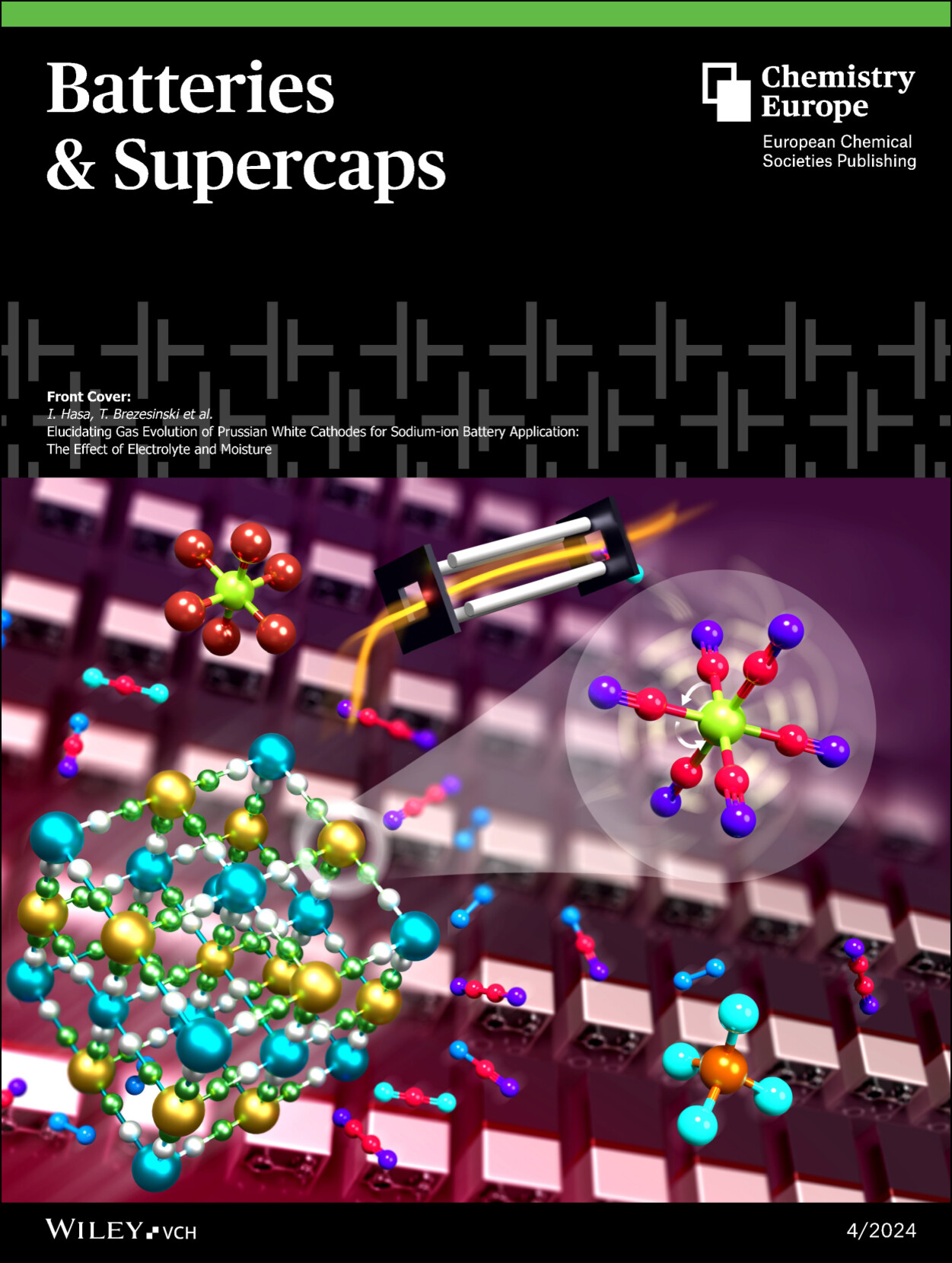A Nanostructured Phenazine-based Conjugated Microporous Polymer Hybrid Anode Boosts Power and Practicability of Organic-Manganese Hydronium-ion Batteries
IF 5.1
4区 材料科学
Q2 ELECTROCHEMISTRY
引用次数: 0
Abstract
Organic-manganese hydronium-ion batteries are gaining attention for their safety, sustainability, and high rate capabilities. However, their electrochemical performance faces challenges due to organic active-materials' inferior properties, including low conductivity and solubility, and limited content (<60 wt%) and loading (<2 mg/cm2) in the anode. To address this, we developed a high-performance battery using a phenazine-based conjugated microporous polymer hybrid anode (IEP-27-SR), utilizing hydronium-ion coordination/un-coordination chemistry. The IEP-27-SR features enhanced structural characteristics, such as high BET specific surface area, mixed micro-/mesoporosity, nanostructurization, and hybridization, enabling rapid hydronium-ion mobility. The resulting IEP-27-SR//MnO2@GF full-cell demonstrates high capacity (101 mAh/g at 2C), excellent rate performance (41 mAh/g at 100C), ultrafast-charging capability (80% charged in 18 seconds), and impressive cyclability with 83% capacity retention over 20400 cycles at 30C with a regular polymer mass loading of 2 mg/cm2, despite its high content (80 wt%) in the anode. Moreover, it shows operability at low temperatures (63 mAh/g at -40 ºC). Most importantly, full-cell with a high-mass-loading polymer anode (30 mg/cm2) achieves practically relevant areal capacity (3.4 mAh/cm2 at 4 mA/cm2) and sustains 2 mAh/cm2 under an extremely high areal current (50 mA/cm2). This breakthrough highlights the progress of organic hydronium-ion batteries, representing progress toward practical battery solutions基于酚嗪的纳米结构共轭微孔聚合物混合阳极可提高有机锰氢离子电池的功率和实用性
有机锰氢离子电池因其安全性、可持续性和高倍率能力而备受关注。然而,由于有机活性材料的低导电性和低溶解性等劣质特性,以及阳极中有限的含量(60 wt%)和负载(2 mg/cm2),它们的电化学性能面临着挑战。为了解决这一问题,我们利用膦离子配位/非配位化学,开发了一种使用酚嗪基共轭微孔聚合物混合阳极(IEP-27-SR)的高性能电池。IEP-27-SR 具有增强的结构特征,如高 BET 比表面积、混合微孔/介孔、纳米结构化和杂化,从而实现了铵离子的快速迁移。由此产生的 IEP-27-SR//MnO2@GF 全电池具有高容量(2 摄氏度时 101 毫安时/克)、优异的速率性能(100 摄氏度时 41 毫安时/克)、超快充电能力(18 秒内充电 80%)和令人印象深刻的循环能力,尽管阳极中的聚合物含量较高(80 wt%),但在 30 摄氏度、常规聚合物质量负载为 2 毫克/平方厘米的条件下,20400 次循环的容量保持率仍高达 83%。此外,它还显示出低温下的可操作性(-40 ºC 时为 63 mAh/g)。最重要的是,采用高大质量负载聚合物阳极(30 毫克/平方厘米)的全电池达到了实际相关的等离子容量(4 毫安/平方厘米时为 3.4 毫安时/平方厘米),并在极高等离子电流(50 毫安/平方厘米)下保持 2 毫安时/平方厘米。这一突破彰显了有机氢离子电池的进步,代表了向实用电池解决方案迈进的进程
本文章由计算机程序翻译,如有差异,请以英文原文为准。
求助全文
约1分钟内获得全文
求助全文
来源期刊

Batteries & Supercaps
Multiple-
CiteScore
8.60
自引率
5.30%
发文量
223
期刊介绍:
Electrochemical energy storage devices play a transformative role in our societies. They have allowed the emergence of portable electronics devices, have triggered the resurgence of electric transportation and constitute key components in smart power grids. Batteries & Supercaps publishes international high-impact experimental and theoretical research on the fundamentals and applications of electrochemical energy storage. We support the scientific community to advance energy efficiency and sustainability.
 求助内容:
求助内容: 应助结果提醒方式:
应助结果提醒方式:


